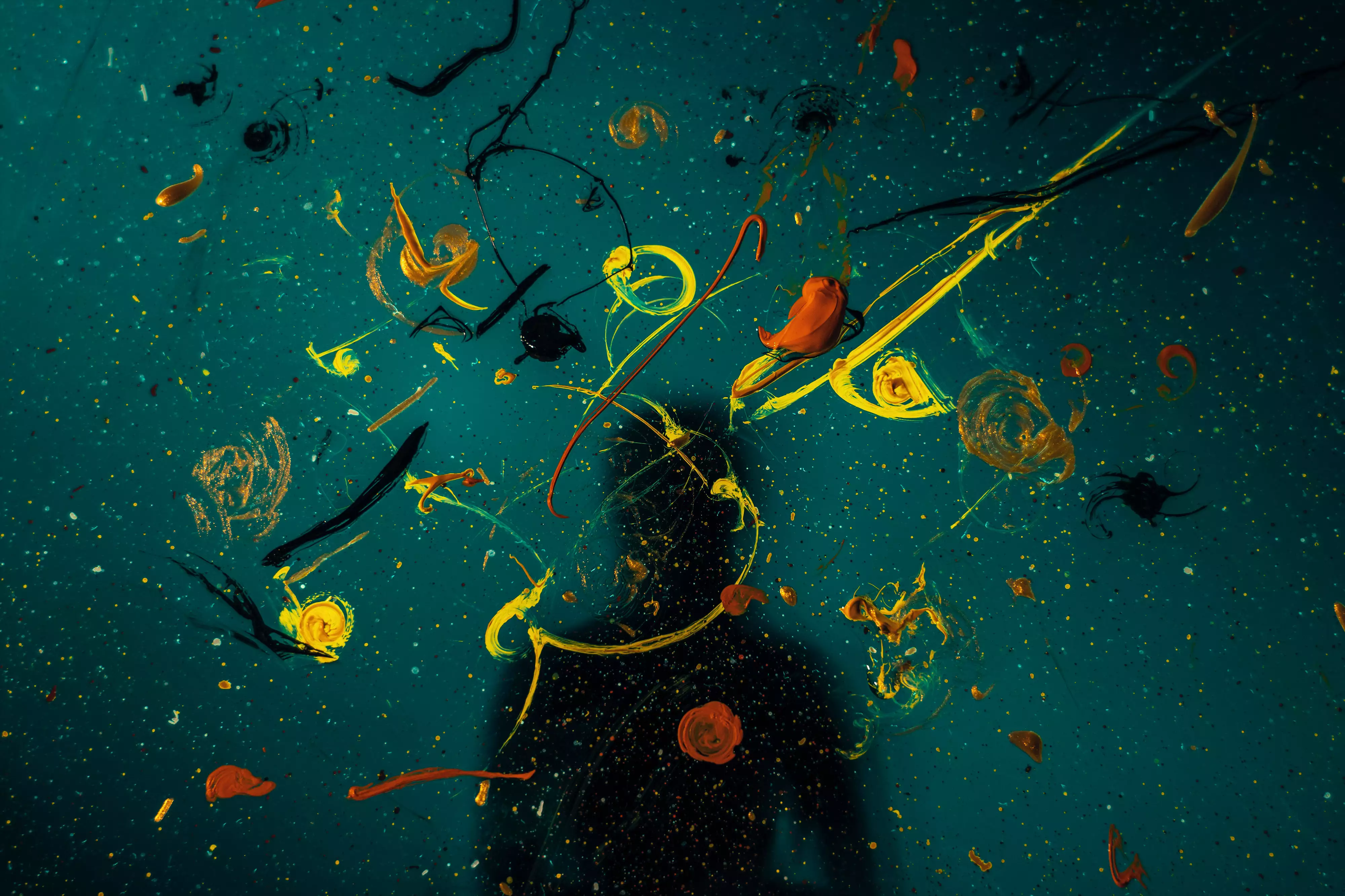If I had to attribute just 1 thing to the ability to cultivate more creativity in my life and business it would be this, “I have a really good relationship with failure”
Some would say we’re best buds even.
Growing up I was never very good at creative stuff. In fact, I was told I was bad at it. But that didn’t stop me. I was content to keep trying and there with me every step of the way were my pals
- Embarrassment
- Mess ups
- Setbacks
- Not knowing what the heck I was doing
And, I was always okay with that. Because my relationship with failure is much different than most.
My career as a designer has had a fair share of failures.
I work at a company called Showit. Which, if you’re asking me, it’s the best drag-and-drop website builder out there, AND if you haven’t tried us out you should.
In 2020 we decided it was time to redesign our website and so I came up with what I thought was a good design. I liked it. It converted well.
But a few years later we hosted a group of designers that use our platform to build websites for clients and they had different thoughts about how good my design was.
But, getting bad feedback didn’t stop me. In fact, it fueled me. This last year when we redesigned our site again all of those same designers couldn’t stop talking about how good it was and our CTO told me that I was able to do things with our platform that he didn’t know was possible.
That wouldn’t have happened unless I was really good at failure.
The key thing that I’ve found sets the best creative thinkers apart from the average is not whether they fail but how they fail.
Our mission at Showit is to cultivate the creativity that exists in each person. And, if I’ve learned anything it’s that if you want to cultivate more creativity you have to get really good at failing.
I like to say that you should never let a good failure go to waste. So true to my word, I’m going to give you 4 insights on how to cultivate more creativity from4 real-life examples of my own failures.
1. Cultivate More Creativity By Asking Good QUESTIONS Not Having Good IDEAS
I was in LA, at a creative conference of all places, when my phone buzzed. You ever get those messages where you see enough of the subject line that you know it’s going to be bad so you just kind of ignore it and hope it gets better? That was what this was a client had reached out and she wasn’t happy:
“What do you mean you're using WordPress to build my website??”
– Upset Client
The problem was that WordPress was the only platform I knew how to use at the time. It was fairly early in my career and I was truly a one-trick pony.
Somewhere on the journey from the client reaching out to hire me and them actually hiring me, I forgot to include this very pivotal piece of information.
So, instead of enjoying the conference, I was hours away, holed up in a coffee shop on my laptop scrambling to manage a client crisis. Why? It all happened because instead of asking the right questions at the beginning of our relationship, I assumed I had the right ideas.
Cultivating more creativity starts with good questions, not good ideas.
Alexander Osborn was the ad exec who introduced the concept of “Brainstorming” in his 1942 book, “How to Think Up.”
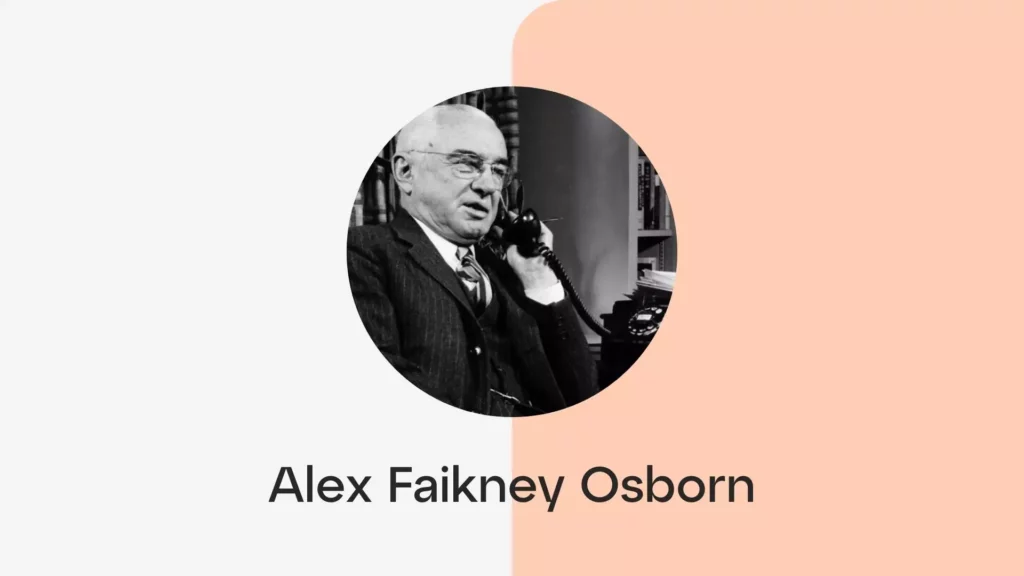
The idea of brainstorming is nothing new to us now but back then it was revolutionary.
The idea is simple enough: gather a group of people, and spitball as many ideas as you can think up. No idea was too dumb or out there.
The problem was out of hundreds of ideas you’d get hardly any worth actually implementing. In other words, brainstorming didn’t actually cultivate more creativity.
A study from Yale in 1958 even showed that brainstorming “inhibits creative thinking.”
Real creativity doesn't sprout from the sheer volume of ideas but from genuine inquisitiveness. Remember this: As creatives, your objective isn't to be the first with the best idea, but to be the first with the best question.
2. Cultivate More Creativity By Understanding the Balance Between Freedom and Boundaries
I was working for a client and I had just made a design that, in my eyes, was nothing short of brilliant. Some of the best work I’d ever done, even. As I presented my masterpiece to the client, I was sure that they would be in awe of the work I had created, slightly expecting a big tip for my genius.
People give tips for design work, right? That’s a thing?
Well, that’s not what happened. Instead of being really excited about the design, they had a ton of revisions that absolutely destroyed all the things I was most proud of.
My work of art had been desecrated!
So, I did what any self-respecting designer would do. I looked them straight in the face and I agreed with them wholeheartedly, expressing disbelief at my oversight.
And then I went and vented to my wife about how dumb they all are. I was hurt.
But, after licking my wounds, I revisited the design. And somehow, after I made those revisions, I found that I actually liked the result more than what I first came up with.
How could this be? It's simple: creativity flourishes with limitations.
Mihaly Csikszentmihalyi whose name alone takes a lot of practice to say right and is the guy behind the concept of “flow.” He says that “creativity can be observed only in the interrelations of a system made up of three main parts:” Domain, Field, and the Individual.
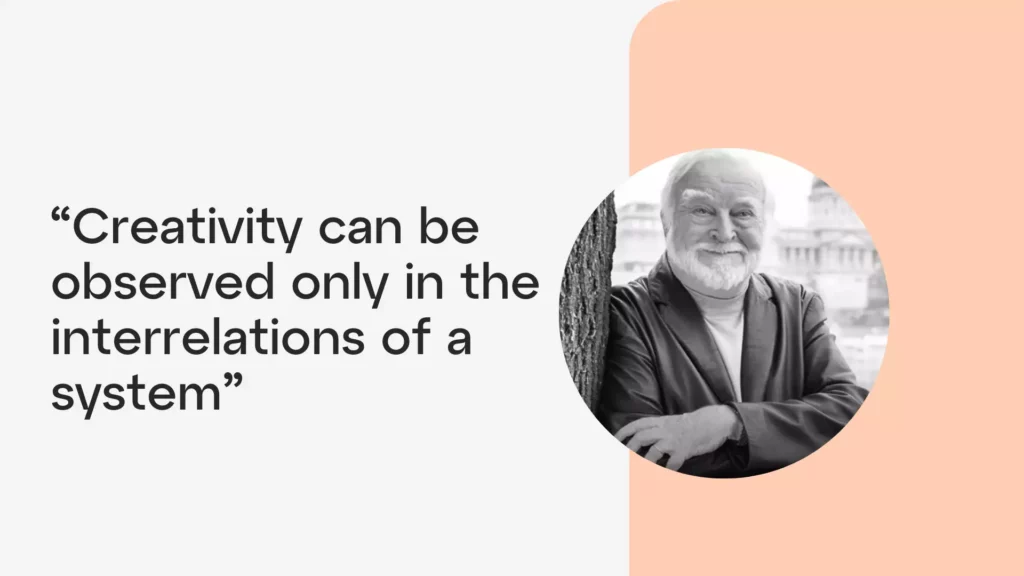
In other words, creativity has to have rules in order to be considered creative. If it didn’t then everyone’s toddler would be considered a creative genius by more than just their parents.
And, just in case you're wondering, my toddler IS IN FACT a creative genius. And, I don't care what any of you think.
Designers often get frustrated with client or manager feedback and tight deadlines. But that’s actually the place where creativity can most shine.
So, if you want to be a great designer, if you want to cultivate more creativity you need to learn design limits. You need to learn the rules. You need to study the greats and try to emulate them.
But don’t stop there! Flirt with the edges. Challenge the norms and standards. In fact, the world needs you to be an original thinker. We don’t need you to be a carbon copy.
And, listen, I know it sounds like I’m speaking out of both sides of my mouth right now. It’s easy to fall in the camp of either “Steal Like an Artist,” OR rebel and challenge the norms like Apple’s 1984 commercial.
But the creative journey is more nuanced than a catchy title or cool ad campaign. It’s give and take. Ups and downs. And in this case, boundaries and freedom.
At Showit, our goal is to nurture creativity at every step. Our platform is among the few that offer genuine drag-and-drop capabilities. So, if you want pure creative freedom, it’s yours.
Prefer a structured start? We have a lot of great templates to choose from. We want to support your growth at every stage of design, from the early days of rule-following to eventually going on to rule-breaking.
3. Cultivate More Creativity by Embracing Your Ego
Before I dove into the world of design I was musician and singer. I played in some bands recorded some albums etc. etc. There was one time in particular that I acted like quintessential self-absorbed musician.
We were in the middle of sound checking with minutes before we were going to go on and let’s just say the guitar player and I had some creative differences. I walked off while shouting, “I will never play with you again!”
Not my finest hour.
Thankfully, our drummer was a little more level-headed than the two of us and he brought us together, and we worked it out enough to play.
You might jump to the conclusion: “Ah, ego! The nemesis of creativity.” “Ego is the Enemy,” right? #ryanholiday But, I don’t think that’s necessarily true.
I think you need what George Prince called “generous selfishness” in his book “The Practice of Creativity.”
Truth be told, isn't a sprinkle of ego necessary to drive our passion for design? Sure, we might love design for its sheer beauty. “Art for Art's Sake” is what reads in Latin above the MGM lion that roars at you right before you watch a movie.

But, doesn't the validation from others, the affirmation that our work is good, feel incredible? There's nothing inherently wrong with that.
Ever tried Clifton's Strengths Finders test? My top strength? Competition. I thrive on it. And while the adage goes, “Community over competition!” I believe there's room for both.
We need ego, but it should walk hand in hand with humility.
Your work can't reach its pinnacle without embracing feedback. In fact, it's not enough to merely be open to critique; you should ardently pursue it. Yet, while doing so, it's essential to acknowledge the presence of your ego.
My failure as a musician storming off stage before a set wasn't because of ego. It was because I was ignoring it up until that point. I kept quiet on other interactions with that troublesome guitar player because I thought that being the better person meant ignoring your ego.
But, as I learned, ignoring it just makes things worse. The monsters under our beds only get bigger when we refuse to see if anything is there.
Accept your ego's existence and brace yourself for the inevitable moments it might get bruised. It will make the creative journey much easier and be a sure fire way to cultivate more creativity.
4. Cultivate More Creativity by Embracing the Hurt
Whoever thought that creative work was for folks who were trying to avoid hard work got it way wrong.
The most painful creative thing I ever did in my life was write and record a full-length album. It wasn’t just the late-night recording. It was something not feeling quite right and having to try 100 things until it finally felt better.
It was thinking I was going to be done in a few months for it to take nearly a year.
It was losing files and having to re-record perfect takes that were hard enough to get right in the first place. So…much…pain.
But, when it was all finished. I was so proud. I was so glad I had gone through the journey. It’s like novelist Frank Norris says, “I hate to write, but I love having written.”
Of course, creative work hurts. If it didn’t it would be a sign that you don’t care enough about what you do.
So, here’s the solution: rather than try to avoid the pain, embrace it. It actually hurts worse if you try to avoid the pain.
It took Lorenzo Ghiberti 20 years to finish the north door of the Baptistry of the Duomo in Florence, Italy. Then another 27 years to finish the east door. So, from 1402 to 1452. In other words, a half a century. But when he was done he had changed the Western world’s conception of decorative art altogether.
Contrast that with the George Washington monument which still somehow does not have a sculpture of George Washington.
The creative process is a long, slow, and painful process but it’s worth it to keep going.
Can I just ask, “What projects have you given up on that might need to be revisited?” Some of your best work might be on the other side of some pain that you need to endure.
5. Cultivate More Creativity with Emotional Safety
We’ve all heard stories of the tortured artist. Van Gogh chopping his ear off…etc. etc. I believed that too. When I was just learning guitar. I would lock myself in my room, make myself sad, and try to write something.
The problem is that stereotype just isn’t true.
From a study of over 200 well-known creative leaders, it was found that “the reigning stereotype of the tortured genius is to a large extent a myth created by Romantic ideology and supported by evidence from isolated and – one hopes – atypical historical periods.”
But, this also doesn’t mean that if you want to be more creative you have to be only happy all the time. If I’ve learned anything from a good deal of therapy, it’s that you become more emotionally unhealthy when you try to keep yourself from feeling certain things.
As creative people, we have a tendency to feel things in a much more profound way than the average person. So, your highs are likely very high and your lows are likely very low.
So, what does this mean: if you want to cultivate more creativity you have to allow yourself to feel things deeply. Creativity thrives when and where we feel emotionally safe to access the full spectrum of our emotions.
So as managers, if you want to cultivate more creativity you have to create environments where people can be vulnerable AND as as individuals, you have to spend time in introspection and developing self-awareness
And, listen, before I lose you, this isn’t a speech about how creativity will solve the world's problems and help you get in touch with your inner child. It’s just the reality of how creativity works.
You have to be able to allow yourself to feel the high, highs and the low, lows of the human experience. And, you’ve got a better shot at being able to do that when you feel emotionally safe.
6. Cultivate More Creativity by Assuming There's a Solution
I was a kid working a summer job in a machine shop. We were putting up conduits out in the shop to run new electricity to a part of the building. Let’s be clear. I had no clue what I was doing, BUT I was working with a couple of electricians.
There was one specific corner that we were having a hard time getting the conduit through and the guys I was working with had given up and told me it couldn’t be done. BUT I refused to believe it. In fact, I was a little frustrated at their lack of faith in me.
So I kept working as they literally ignored me. But, in 30 minutes I had come up with a solution.
If you’re anything like me you probably get a little pissed when someone tells you it can’t be done. It’s that attitude that has led to some of the most creative breakthroughs humanity has seen.
No one does anything of significance to a crowd of people who are absolutely sure that what they’re attempting is possible.
Before 1954 Scientists actually believed it was impossible for any human being to break the 4-minute mile. Until that year on May 6th Roger Bannister did just that.
But what happened after that? The very next year 3 more people broke the 4 minute mile and the year after that another 5. It’s such a common phenomenon there’s literally a name for it. It’s called the Roger Bannister Effect.
You have to start by assuming there’s a solution to the impossible task that no one’s figured out yet.
7. Creativity Flourishes When You Take a Day Off
Angela Duckworth’s book on how the most successful people all had a decent amount of grit and sticktoitiveness had a profound impact on our culture.
I can’t scroll more than two or three Instagram posts without seeing some reference to rising and grinding.
The problem with that is to much rising and grinding actually kills creativity.
The Nobel Prize-winning geneticist Oliver Smithies talks about how he reserved Saturday morning for doing experiments that had nothing to do with what he was working on professionally in the book Range by David Epstein.
“One needs to let the brain think about something different from its daily work.” Because when you do you don’t have to be completely rational.
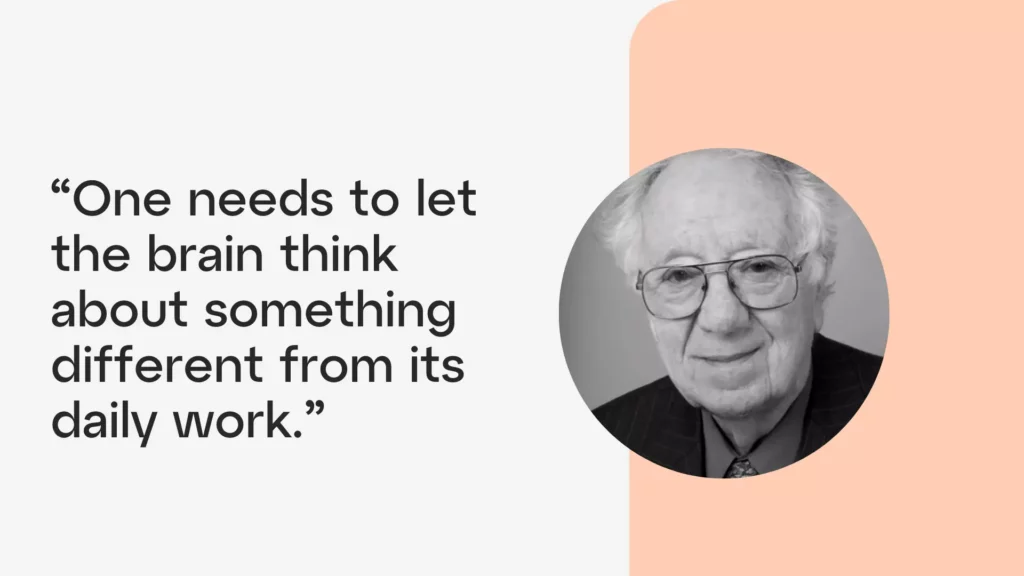
Smithies got into genetics because he decided to take a sabbatical from his job as a molecular biochemist.
If you want to cultivate more creativity you need to give yourself permission to have fun and explore things that aren’t tied to a paycheck.
Just this year I myself decided to put more margin in my schedule in order to be able to explore other things. Before that I had a full-time job at Showit, I was running a blog, podcast, YouTube channel, and an agency.
I was on the brink of burnout when I pulled the plug on 75% of what I was doing. As a result, I’ve had one of the most creatively productive years of my career.
All because I slowed down and stopped gritting so much.
8. Creativity Grows Through Failure
Finally, creativity thrives on failures.
Failure is scary. All of us are trying to avoid it like the plague.
The problem is that the best creative works come out of an absolutely excessive amount of failure.
My encouragement to you through all of this and the thing I want to leave you with. Is don’t be afraid to fail. Don’t be afraid to take chances, to go out on a limb that seems scary.
Had I not failed as often as I have I wouldn’t have even had a talk to share with you today.
The key is that despite the amount of failures you are bound to have in your creative journey you’ve got to get back up and keep going.
There is a creative breakthrough around the corner if you just don’t quit.
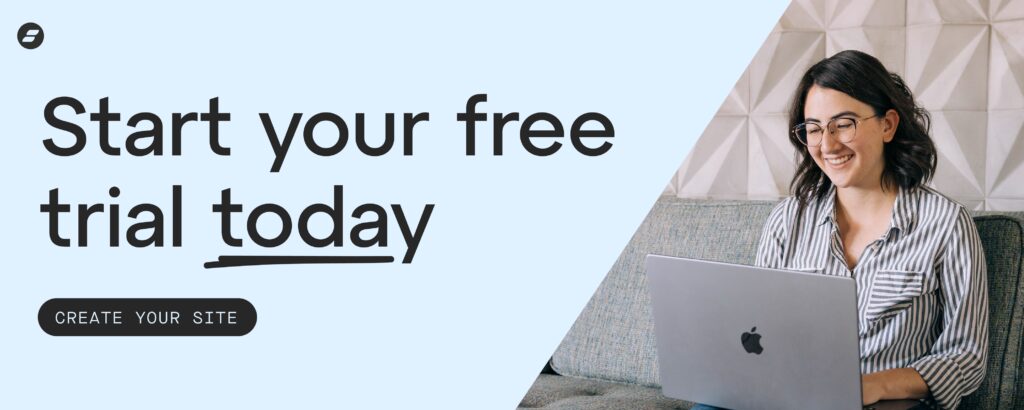
Chris is multitalented, being able to play a number of instruments, and having an inclination towards creative design, AND technical know-how. He cheerfully brings his Swiss army knife of skills to our designer community.
